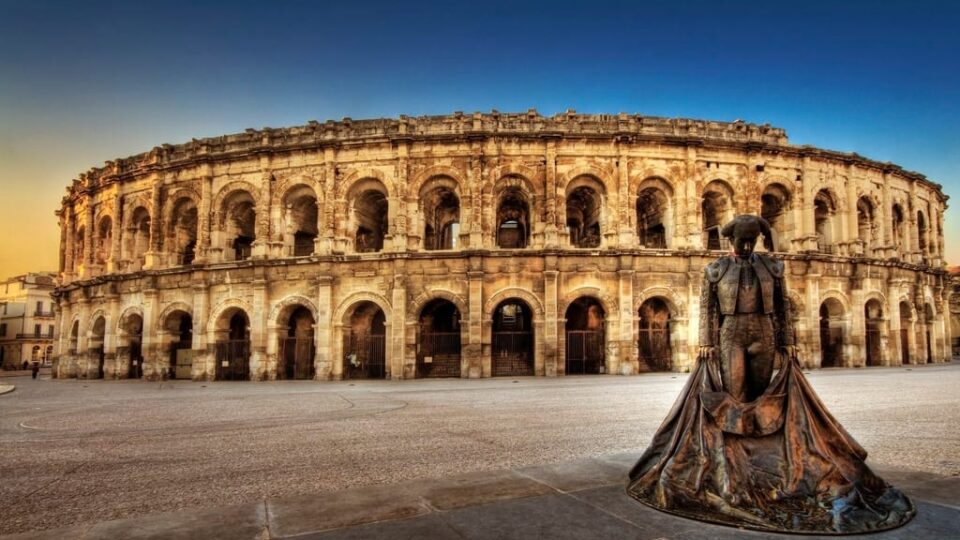What is Nimes Famous For
Famous for its ancient cultural heritage and the warm southern sun, the city of Nimes appears untouched by the passing of time. The place has some of the most preserved Roman monuments in continental Europe. Its historical center has a charming ancient atmosphere with lots of tree-lined streets and fountain-decorated public squares. In addition to the appeal, outdoor cafes submerge Nimes’ cobblestone pedestrian neighborhoods.
If you get to visit in the summer, you will have the chance to rock the city like a local by attending interesting festivals and the general vibrant ambiance that characterizes Nimes.
>>Also Read: Nimes Travel Guide
Here Are Some Things Nimes is Famous For:
Arènes: The Ancient Roman Amphitheater
Evidence of Nimes’ obvious Roman influence is the Arènes, an Amphitheater built in 1st century AD. Located at the town’s center, this beautiful 133m by 101m outdoor theatre is the most famous monument in Nimes. It has a seating capacity of 24,000, and even though it is not the most imposing by size, the Nimes Amphitheater is among the best-preserved Roman amphitheaters still standing today.
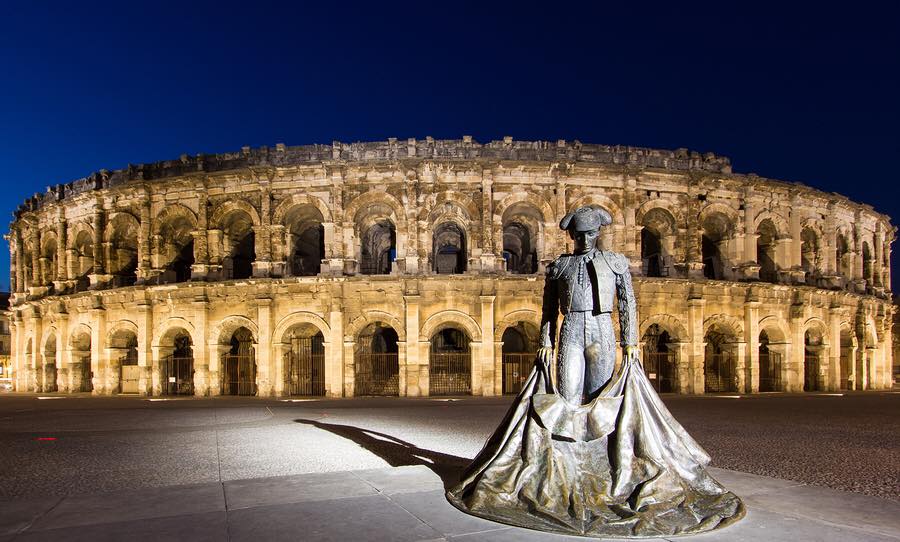
The 60 grand arches of the exterior are decorated in the upper segment with embellished Doric half-columns and at the lower segment with pillars. The Nimes Amphitheater was designed to hold large crowds as there are about 124 exits that make it possible for spectators to exit on time.
This landmark was converted into a fortress in the 5th-century; later it was transformed into a knight’s castle in the Middle Ages. But recently, the Amphitheater was converted to its initial state. The monument now serves as a venue for cultural festivals and events. More recently, the Arènes hosted the Les Grands Jeux Romains festivities; a 2000-year-old array of circus games relived with historical accuracy. In the summer, the place hosts the Festival de Nimes. This is an event of music concerts, theater performances, dance, and street arts. The Arènes is located at Boulevard des Arènes, Nimes.
Maison Carrée
This terrific building is one of the unique, well preserved classical Roman temples that still stand today, besides the Pantheon in the Italian capital. Constructed between 20 and 12 BC in the time of Emperor Augustus, Maison Carée was an important temple in the Forum (the Roman town’s administrative and economic center). This place was dedicated to Lucius and Caius Caesar, the emperor’s grandson and adopted son.

Influenced by the temples of Mars Ultor and Apollo in Rome, this monument contains compatible classical balances. With its impressive dimensions of 26 m and 15 m height, this place is among the best places to visit for a peep into ancient Roman architecture’s grandness.
Delicately embellished with a staircase of 15 steps and acanthus, the façade of tall Corinthian columns. The 15 steps courses to the porticoed pronaos (Temple’s entrance). In the Middle Ages, the Maison Carée served as a convent prior to becoming a state property in the Revolution. It was restored in the 1700s and recently went through renovation from 2006 to 2008.
After about three years of renovations by stonemasons and sculptors, it can be said that the Temple has regained back its ancient glory. Visitors will see a multimedia presentation about the city’s history when they step into the interior.
Jardins de la Fontaine
This calm green space, situated on the site of an old spring close to the Maison Carée, is an amazing place for a pleasurable walk. Embellished with stupendous vases and Baroque-esque statues, the Jardins de la Fontaine used to be part of a special program to decorate Nimes in the 1700s.
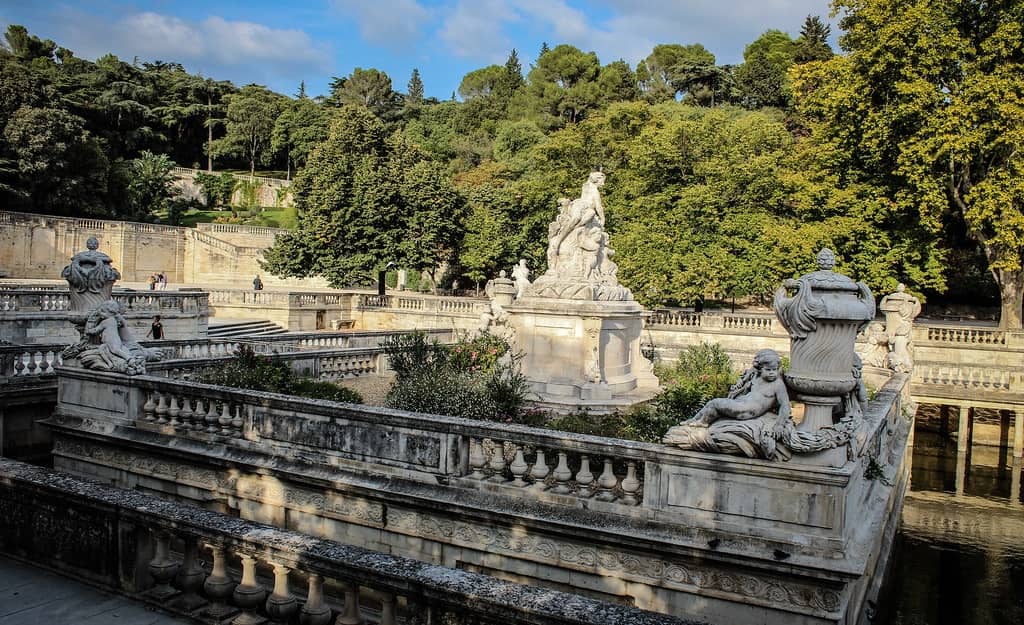
The well-embellished gardens were mapped out around the old sheltered ramparts. The gardens span to many varied levels. By checking out the waterways and water basins, you will finally come across the remains of the Temple de Diane. This oracular Temple might be the lying place of a scared spring or a bath complex’s section. No one knows for sure its use.
Mont Cavalier stands proud at the back of the Jardins de la Fontaine. It is a lush region of shady footpaths and subtropical plants. Right on its peak stands the Tour Magne with 40 steps. Recognized as a historical monument, the Tour Magne has been standing since the 15 BC, and it is used to be part of the Nimes’ old ramparts. The towers signify part of the defensive wall that rounds Nimes in the ancient Roma period. Jardins de la Fontaine is located at Quai de la Fontaine.
Festivals and Events
Checking out a cultural event or local festival ranks high among the most engaging and thrilling things to do in the city of Nimes. All year-round, the city hosts bubbling festivals, like the Féria de Pentecôte (Festival of Pentecost), when Nimes get to enjoy about 6 days of religious concerts, ceremonies, street food, bullfighting shows, and Spanish flamenco dancing.

Adding to the impressive list of events in Nimes is the Spanish-influenced Flamenco Festival held in January that features dance classes and flamenco performances. Les Grands Jeux Romains in April reenacts ancient Roman circus games at the city’s Amphitheater. The Musique au Cloitre (Music at the Cloister) is held in June and July, where classical music concerts are organized at the Cloitre des Jesuites.
On Thursday evenings in July and August, Les Jeudis de Nimes is held. The city is marked with outdoor markets with antique shops and crafts, while the crowds are thrilled by flamenco music or jazz blues. In June and July, the yearly Festival de Nimes adds a set of performances organized at the Amphitheater. The festival includes concerts, music, theatre, and dance performances.
Musée des Cultures Taurines
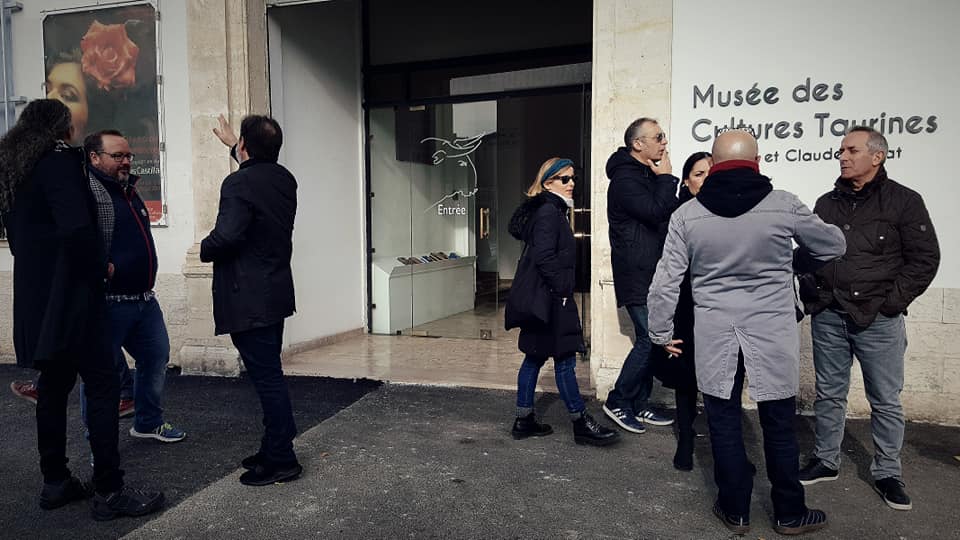
This interesting museum honors the bullfighting tradition that has become part of the city’s heritage. Musée des Cultures Taurines is close to the Amphitheater, where bullfighting has been held for some events since the mid-1900s. Visitors will find bullfighting costumes, artworks showcasing bullfights, and impermanent exhibits with bullfighting themes. You can learn about bullfighting customs that emerged from Spain and were brought to the neighboring Camargue area of the south of Arles. The museum is located at 6 Rue Alexandre Ducros, Nimes.
Porte d’Auguste (Auguste Gate)

Named in honor of the Roman Emperor Augustus, who, at one time, protected Nimes. This place is the old entrance gate that leads visitors through the ancient ramparts. Also known as Augustus Gate, the Porte d’Auguste is located on the Old Roman road that stretches to Rome (Via Domitia) and is situated at the corner of the Boulevard Amiral Courbet and the Boulevard Gambetta. According to an inscription, the gate is said to date back to the 1400s and was subsequently added into a medieval fortress’ wall. It would not be discovered again until 1752 after the fortress was destroyed. A contemporary copy of the statue of the emperor can be seen nearby the gate. Porte d’Auguste is situated at 25 Boulevard Amiral Courbet, Nimes.
Musée des Beaux-Arts
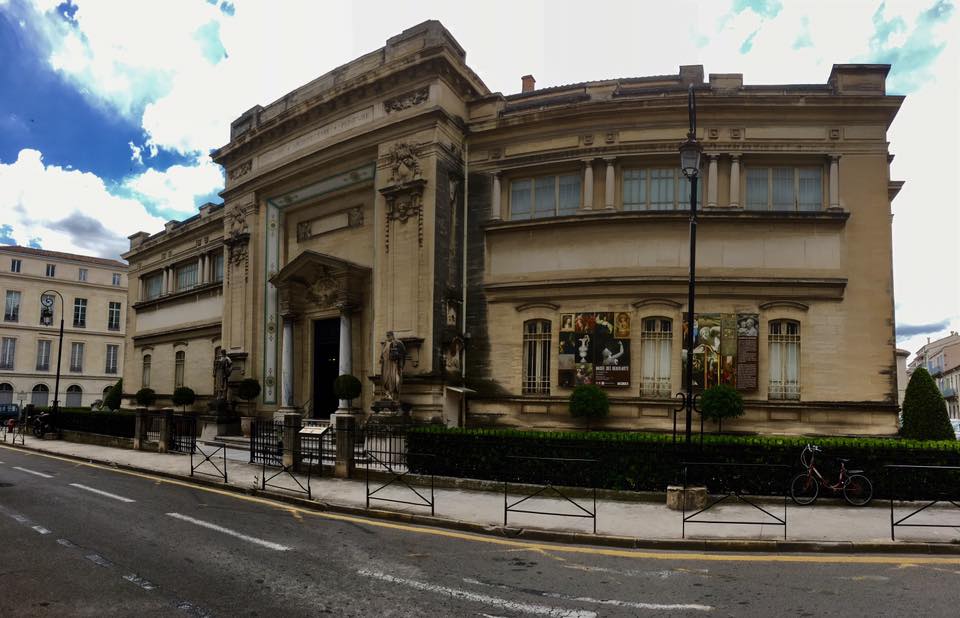
This popular fine arts museum is housed in a Neoclassical structure built in 1907. Two statues made by Henri Bouchard greet visitors at the front doors. Musée des Beaux-Arts showcases the second-largest group of its type in the Languedoc area, with a blend of 3,600 works by Flemish, French, Italian, German, and Spanish painters.
French paintings from the 1800s and Italian maestros’ paintings from the 1500s to 1600s are the focus of the collection. At the atrium’s ground floor, visitors will see a big ancient Roman mosaic showcasing the Wedding of Admetus; that is the museum’s major attraction piece. The beautiful work was uncovered in the 1800s in a marketplace. Musée des Beaux-Arts is located at Rue de la Cité Foulc, Nimes.
What is Nimes Famous For – Summary
The famous aspects of Nimes’ city life and ancient Roman credentials are totally unmissable. When you visit, it comes clearer to you why it is aptly called the French Rome. Walk through the astonishing streets to discover the less known and notable gems that this scenic southern city affords.
